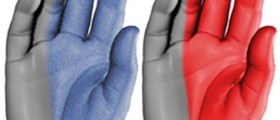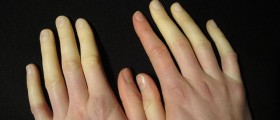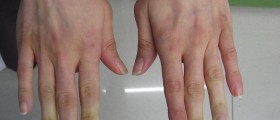
Dystonia of the fingers, hands or forearms is a condition also well known as writer’s hand. This problem frequently affects people who repeatedly perform tasks which require fine motor movements, such as people playing some musical instruments or writers (hence the name). Very similar problems may affect typists, violin musicians or golfers.
The cause of these cramps may have something to do with a family history. This is found especially true for people who suffer from DYT1 dystonia (generalized type of dystonia).
Symptoms of Dystonic Cramps
Some patients suffering from hand dystonia may experience problems only in situations when they try to play or write (simple cramps), while others may additionally suffer from more generalized symptoms as well (dystonic cramps). Primary hand dystonia is rarely generalized condition and it is often associated with DYT1 gene. Many of these patients have additional symptoms, but in some cases focal dystonia of the hand might be their only problem. However, this condition can also be secondary, caused by some other medical conditions.
Excessive gripping of a pen or some utensils is very frequently seen in these patients, as well as Flexing of the wrist and elevation of the elbow. Some people may experience extension of one or more fingers, causing the fall of the utensil from the hand. The hand might ache, but this rarely occurs. More often, patients complain about mild discomfort in the fingers, wrist or in their forearm. However, secondary hand dystonia may cause much greater pain. Progression of writer’s hand may cause elevation of the shoulders or retraction of the arm while the person writes. In general, patients suffering from this problem are 30 to 50 year old people, regardless the gender.Hand Dystonia Diagnosis and Treatment
There are no tests able to confirm the diagnosis of dystonic cramps. This condition is often misdiagnosed as overuse of the arm, but these two conditions are different. Overuse commonly produces painful sensations, while dystonia of the hand is known to cause discomfort and hand coordination problems.
Every single case of hand dystonia may be treated differently, depending on the problem. Doctors usually advise their patients to avoid triggering dystonic movements, using some assistive or adapted devices or occupational therapy.
Anticholinergic drugs are also in use, especially Artane (trihexyphenidyl) and Cogentin (benztropine), but patients report just 5% success rate with these medications. Some people have tried Botulinum neurotoxin (Botox) and they have seen certain level of improvement in cases of finger or wrist deviations.

















Your thoughts on this
Loading...